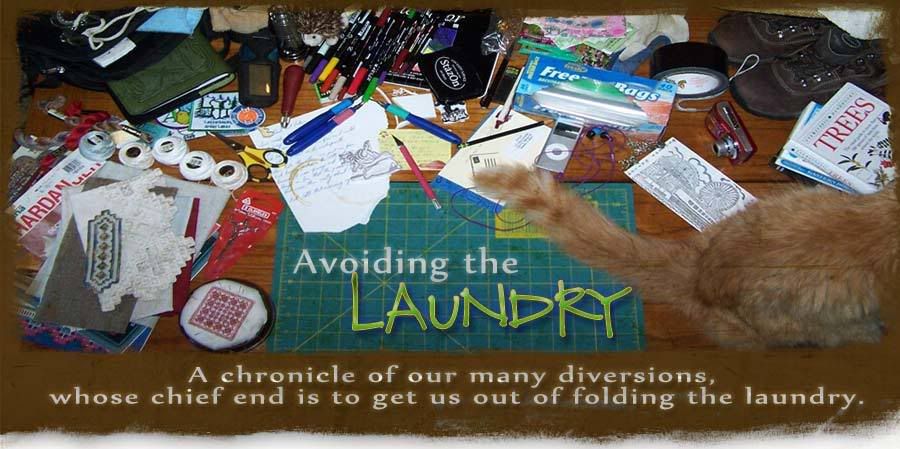Today I am going to teach you about cutting your fabric in preparation for stitching the Openwork, or Cutwork sections. I intend to over explain it; not because it is difficult, but because it is vital that you know exactly what you are doing so that you don't ruin all of your hard work to this point. Clip one wrong thread and it's over. So, please read the entire lesson before you begin cutting on your piece.
On the chart above, the red lines identify the thread you are going to cut. The picture below will demonstrate further.
The green thread shows you exactly where you will cut. The oranges lines identify place that you should Not Ever Ever Ever cut. A simple rule of thumb is that your cuts will Always run perpendicular to the ends of your satin or buttonhole stitches. You will Never cut parallel to existing stitches. Notice the direction the green thread runs in relation to the stitches around it. If you cut on the orange lines, the satin and buttonhole will unravel and your piece will disintegrate. Have I instilled a sufficient amount of fear yet? Good. Then we can move on without the "I'm not doing this to be mean, but for your own good" speech.
When you cut the threads, you need to insert the point of your scissors under the threads you're going to cut and bring it back up to the top of the fabric, as in the picture below. You need to know where the points and the full length of the blades are before you snip the threads, so that you don't accidentally clip fabric or thread that is out of sight. You will be able to see the metal of the scissors through the holes of the fabric. Then you'll know if there is anything between them and the threads to be cut that should not be there.
Once you've done this a little bit, you'll get the hang of it. You may even wonder why I'm making such a big deal out of it (especially since I picked a piece without much cutting for your first attempt). But if you ever have to pull a lot of stitches and reweave fabric to salvage a piece, you'll understand. I've been doing this for years, and still when I'm cutting, I turn off the TV, etc, and my family knows not to even talk to me until I've released the breath I'm holding.
Once the threads are cut, you will gently pull out and discard them. I always start by pulling the shortest lengths first. In this piece, they're all short though.
This is what your piece will look like when all the cut threads have been removed. Tomorrow we'll start the Wrapped Bars and Picots.
In a future lesson, I will probably cover cutting and weaving larger open sections. These are so small they almost don't count.





